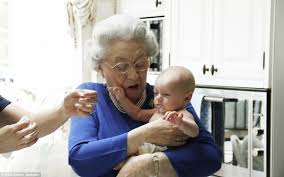Impact of Relatedness on Grandmothers’ Desire to Care for Their Grandchildren
YemenExtra
Historically, grandmothers have been important to their grandchildren, and the help provided by grandmothers has increased grandchild survival during the times of high child mortality.
However, there have been signs that in many populations, the impact of maternal grandmothers and paternal grandmothers on their grandchildren has been different.
A recent study conducted at the University of Turku, Finland, shows that X-chromosome relatedness between grandmothers and their grandchildren did not affect grandchild survival in the 18th and 19th century Finland.
Biological kin selection means that organisms may be more willing to help others in relation to how many genes they share. For example, unselfish behaviour can sometimes be explained by kin selection: in animals, the larger the degree of relatedness, the more likely they may be to help.
In the study conducted as part of the dissertation of Doctoral Candidate Simon Chapman from the University of Turku, a hypothesis was tested according to which the genetic inheritance of grandmothers’ X-chromosome affects the level of help they provide to their grandchildren.
“Since sons inherit their only X-chromosome from their mother, and daughters from both of their parents, paternal and maternal grandmother’s degree of relatedness with their grandchildren through the X-chromosome is different. Granddaughters are a little more related and grandsons a little less related to their paternal grandmother than other grandchildren. However, the difference is very small, as granddaughters share on average 27 percent and grandsons 23 percent of their genes with their paternal grandmother. Maternal grandmother’s relatedness with their granddaughters and grandsons is 25 percent,” says Chapman.
If grandmothers were to help their grandchildren in relation to their degree of relatedness, it should be visible in the differences in grandchildren mortality. Chapman tested this hypothesis in his study by comparing children’s survival using data collected in the 18th and 19th century Finland. During that time, child mortality was high and grandmothers are known to have helped their grandchildren survive through the dangerous infancy period.
Chapman compared child mortality during the first five years of life, depending on sex and whether the child’s paternal or maternal grandmother was present. The study did not produce enough support for the hypothesis that the small differences in grandmothers’ relatedness through X-chromosome would have had an impact on grandchild survival in Finland during the 18th and 19th century.
The study published in the Biology Letters journal is part of a research project on human evolutionary biology led by Academy Professor Virpi Lummaa.

